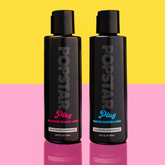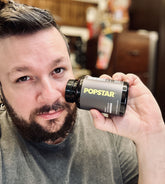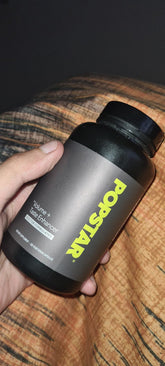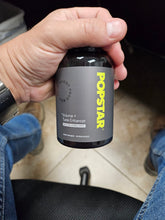Corner Cowgirl is a variation of the well-known “Cowgirl” sexual position, subtly adapted to prioritize comfort, intimacy, and unique angling for both partners. In men’s health contexts, this position has gained attention for its potential in reducing strain on the male partner’s body and optimizing sexual pleasure for both parties. Yet, as with any intimate practice, achieving maximum satisfaction and safety depends on awareness of physical mechanics, open communication, and a spirit of exploration. In this comprehensive guide, we’ll delve into the definition of Corner Cowgirl, its anatomical and historical background, reasons it might be beneficial for men’s sexual health, tips for performing it safely, and answers to frequently asked questions. Let’s begin our journey into understanding why this position has piqued interest among couples and sexual health professionals alike.
Table of Contents
- What Is Corner Cowgirl?
- Historical Perspective and Cultural Context
- Anatomy and Mechanics of Corner Cowgirl
- Benefits for Men’s Sexual Health
- Frequently Asked Questions
- Tips and Variations for Corner Cowgirl
- Potential Risks and Precautions
- References
What Is Corner Cowgirl?
The Corner Cowgirl position is often described as a refined approach to the traditional Cowgirl. In the traditional Cowgirl, the receiving partner lies on their back while the giving partner (often referred to as the person on top) straddles them. However, Corner Cowgirl uses an angled or corner surface—like the corner of a bed or a sofa—to aid in balancing body weight and adjusting penetration angles. This angular support can bolster pelvic friction in specific areas while minimizing potential discomforts, making it especially appealing for men’s health.
Instead of simply placing oneself on top, the individual guiding the movement can align their knees or thighs against a corner for extra stability. This methodical angling may lead to deeper sensations for both partners, particularly when focusing on stimulating erogenous zones such as the G-spot (for female recipients) or the prostate (for male recipients in same-sex partnerships). In heterosexual contexts, it can help the male partner maintain an erection with diminished strain on his knees, hips, or lower back. Because of this distinct arrangement, Corner Cowgirl can be both adventurous and supportive.
Many couples perceive it as an opportunity for experimentation without venturing into complicated or acrobatic maneuvers. The beauty of Corner Cowgirl is that both partners have increased control over speed, depth, and angle, which promotes open and direct communication throughout intimacy. This level of shared control often fosters the sense of cooperation and closeness essential for any fulfilling sexual experience.
Historical Perspective and Cultural Context
The broad practice of partner-on-top positions (like Cowgirl) can be traced back many centuries within various cultures. Historical texts from Eastern traditions, such as certain passages in the Kama Sutra, outline a range of positions in which one partner sits or kneels above the other. Though the specific term “Corner Cowgirl” is contemporary, the concept of improvising with furniture corners, cushions, and other supports to find pleasurable angles is far from new.
Shifts in societal attitudes toward open discussions about sexual positions have brought creative solutions like Corner Cowgirl into mainstream conversations. Over time, sexual health professionals, relationship bloggers, and men’s health research organizations have recognized the potential role of nuanced positions in addressing issues like erectile dysfunction, premature ejaculation, or even chronic pain during intercourse. The cultural acceptance of these discussions has grown in parallel with a broader acceptance of sexual wellness as integral to overall health.
While Corner Cowgirl may not appear in historical treatises by name, its deeper roots in the art of sexual adaptation are undeniable. In many cultures, repurposing existing household structures—like the corner of a bed or an ottoman—was considered normal to enhance comfort or novelty. In the modern day, we have tied these practices to men’s health insights, resulting in a reintroduction of adaptable positions that can be beneficial for physical well-being and mutual satisfaction.
Anatomy and Mechanics of Corner Cowgirl
Understanding how the body aligns during Corner Cowgirl is essential for maximizing pleasure and avoiding injury. The central idea of this position is the angled approach: the receiving partner’s torso rests comfortably against a surface, and the top partner’s thighs or knees are strategically placed at the corner. This leverage can reduce strain on critical joints like the knees, hips, or spine.
Pelvic Alignment:
The top partner’s pelvis is crucial for controlling penetration depth. By adjusting angle and grip on the corner of a bed, the top partner can shift, sway, or rock their hips to stimulate the recipient’s erogenous zones. For men, these micro-adjustments of pelvic tilt can be significant in sustaining an erection and ensuring a manageable pace, particularly for those who want to moderate intense sensations.
Muscular Engagement:
Core strength and leg stability play a large role in this position. The top partner often engages the quadriceps, glutes, and core muscles to maintain balance. Meanwhile, the receiving partner can focus on providing feedback or assisting with subtle movements that increase mutual pleasure. Since the top partner is controlling much of the motion, it’s beneficial to have a sense of where the body’s pressure points may arise—particularly around the ankles or the lower spine.
Joint Considerations:
One reason men’s health professionals have discussed Corner Cowgirl is its relative gentleness on the male partner’s joints. In a traditional Cowgirl, the partner lying down might need to lift their hips repeatedly or shift weight onto the wrists, which can be exhausting. With a corner or angled surface supporting the top partner, the receiving partner can focus on partial thrusting if desired, without the same high demand for repeated movement. This can be a relief for men dealing with knee, hip, or back discomfort.
By harnessing the mechanical advantage of an angled surface, the body can more effectively sustain the position for extended durations. This fosters deeper exploration of sensation, fosters emotional closeness, and can accommodate men who have struggled with positions that cause an uncomfortable load on particular joints.
Benefits for Men’s Sexual Health
Corner Cowgirl has emerged prominently in men’s health discussions and sex therapy contexts, primarily because of the reduced strain it places on the male body and the potential for stronger control over stimulation. Below are key benefits that highlight why some men may find this position especially favorable:
- Improved Erection Management: Controlling the angle and speed can help men who struggle with maintaining an erection. The top partner’s movement can be moderated, ensuring stimulation remains steady but not overwhelming.
- Reduced Lower Back Strain: Overarching the spine during sex is a common complaint. Corner Cowgirl, with its supportive angle, allows the receiving male partner to keep the spine more stable, potentially mitigating discomfort.
- Potential Delay of Ejaculation: For men looking to extend pleasure, the distinct up-and-down or rocking motion can be more easily paused or regulated compared to more vigorous positions, helping to modulate climax timing.
- Better Visual and Emotional Connection: Eye contact and tactile communication are often enhanced in top-partner positions. Corner Cowgirl adds a dimension of stability, so both partners can focus on each other rather than on balancing or straining.
- Accessibility for Various Body Types: Because of the angled support, men of different statures or with certain mobility constraints might find this position more manageable. The reduced exertion can lower anxiety about physical performance.
All these benefits underscore why Corner Cowgirl has started to appear in men’s health educational materials, especially content focused on balancing intimacy with physical well-being. It’s a position that supports men who want to preserve comfort while maintaining closeness, a winning combination for many couples.
Frequently Asked Questions
What makes Corner Cowgirl different from the classic Cowgirl position?
In the classic Cowgirl, the top partner typically straddles the receiving partner with minimal external support. The “corner” element in Corner Cowgirl introduces an angled piece of furniture or a corner of the bed or sofa for better weight distribution. This subtle shift can allow more fluid movement, extra stability, and nuanced control over depth and rhythm.
Does Corner Cowgirl help with erectile dysfunction?
While no sexual position outright cures erectile dysfunction (ED), Corner Cowgirl may assist men by reducing performance-related physical stress. Because the top partner can dictate intensity and speed, the male partner lying down can focus on mental relaxation and enjoy consistent stimulation. This reduced stress might ease performance anxiety, which can be a component of ED.
Can Corner Cowgirl reduce discomfort in the hips or lower back?
Yes. Corner Cowgirl’s angled alignment lets the lower back rest more naturally. The top partner is supported by the mattress edge or a stable corner, meaning the receiving partner isn’t forced into repetitive or strenuous thrusting. This adjustment may help men who typically experience aches in their hips or spine during deeper penetration positions.
Is Corner Cowgirl suitable for couples with different body types?
Absolutely. One advantage of Corner Cowgirl is its adaptability to a variety of heights and body shapes. If both partners are mindful of each other’s comfort, it can be a welcoming position that celebrates body diversity. Pillows or cushions can be added for additional height or lower-back support, ensuring both participants find a comfortable angle.
How does Corner Cowgirl affect intimacy and emotional bonding?
This position naturally fosters face-to-face contact and easy communication about pace and pressure. The ability to synchronize movement can deepen emotional connections as each partner listens to and adapts to the other’s cues. For many, the sense of teamwork inherent in Corner Cowgirl can be nurturing and confidence-building.
Does Corner Cowgirl increase the risk of penile injury?
Any sexual position carries a risk of injury if partners move too abruptly or forcefully. However, Corner Cowgirl’s slow, controlled style tends to reduce stress on the penis compared to more dynamic positions, like vigorous missionary or standing poses. Always communicate and take a break if discomfort arises.
Is this position helpful for premature ejaculation?
Men who are prone to early ejaculation may benefit from the measured control available in Corner Cowgirl. Instead of intense thrusting, pace can be adjusted on the go, granting men the chance to pause stimulation momentarily. This moderation can help build stamina and extend lovemaking.
Can Corner Cowgirl be performed on any corner or edge?
It can be done on the corner of a bed, a couch, or even a sturdy table if it’s stable and safe to support the top partner’s weight. Always verify that the furniture is steady before using it to prevent slips or falls. Additionally, ensure that there are no sharp corners that could cause injury.
Does Corner Cowgirl help with reaching orgasm for both partners?
Many couples appreciate that the angled nature of the position can enhance stimulation to sensitive areas for both individuals. For female recipients, certain angles can intensify contact with the G-spot, while the male partner can feel consistent sensations along the shaft. That said, individual experiences vary, and open communication is crucial.
Should I consult a healthcare provider before trying Corner Cowgirl?
It’s always wise to consult a healthcare provider if you have underlying medical conditions, chronic pain, or prior injuries that could be aggravated by sexual activity. If you experience persistent discomfort or suspect you have specific orthopedic needs, a physician or physical therapist can offer individualized advice.
Tips and Variations for Corner Cowgirl
Though the basic structure of Corner Cowgirl is relatively straightforward, there are many ways to fine-tune it so that it best suits you and your partner’s preferences. Below are some tips and potential variations:
- Focus on Setting the Mood: Dim the lights, play soft music, or use scent diffusers to help both partners feel relaxed. A calm atmosphere can enhance the slow, deliberate nature of Corner Cowgirl.
- Experiment with Pillows: Placing a pillow under the male partner’s hips or the top partner’s knees can change the angle slightly, allowing for more intense or gentler penetration. This also helps with added back support.
- Use Props for Stability: Chairs with low backs or ottomans can be repurposed for balancing your weight, giving you extra confidence while exploring deeper thrusts.
- Incorporate Hands for Extra Stimulation: If comfortable, the top partner can place a hand on the male partner’s chest for leverage, or both partners can explore manual stimulation of erogenous zones like the neck, nipples, or inner thighs.
- Vary the Speed and Rhythm: Instead of a uniform motion, consider shifting between slow rocking, gentle grinding, and occasional faster thrusts. Variety can heighten arousal and prolong the excitement for both participants.
Experimenting within the realm of Corner Cowgirl can deepen the bond between partners. Whether you choose to incorporate these tips or discover new ones on your own, the cornerstone of success is communication: share feedback about what feels good—or what doesn’t—and adjust accordingly.
Potential Risks and Precautions
While Corner Cowgirl can be a valuable sexual position for many, it’s not without its potential risks. Awareness of these issues will help you exercise caution:
- Joint Vulnerability: If the top partner is bearing weight on knees or elbows, those joints may be susceptible to strain over time. Try padding fragile areas with towels or pillows.
- Furniture Stability: Using a rickety chair or uneven table can cause slips or falls. Always confirm that the base is sturdy enough to hold both partners’ weight.
- Overexertion: Even though Corner Cowgirl typically reduces strain for the male partner, it can still be physically demanding for the person on top. Pace yourself to avoid muscle cramps.
- Communication Gaps: Misalignment or uncommunicated discomfort can lead to painful penetration or potential injuries. Frequent verbal check-ins are essential, especially in advanced or extended sessions.
- Underlying Health Conditions: Individuals with severe arthritis, chronic back issues, or cardiovascular concerns should consult a healthcare professional prior to engaging in physically demanding sexual positions.
Keep in mind that there is no single “perfect position” for everyone. Adaptation to personal comfort levels, usage of supportive cushions, and readiness to change positions mid-way all help in preventing injury or undue strain. As with any sexual exploration, being attentive and responsive to your and your partner’s bodies is paramount.
References
- Lee, M., & Johnston, A. (2020). A Practical Guide to Sexual Positions for Joint Pain Relief. Men’s Health Journal, 45(4), 210-219.
- Patel, R., & Suarez, G. (2019). Sex Therapy and the Role of Comfort in Erectile Dysfunction. International Society for Sexual Wellness, 12(2), 88-95.
- Saxena, N., & Thompson, J. (2021). The Impact of Body Positioning on Male Sexual Performance. Journal of Urological Health, 33(7), 1012-1021.
- Adams, D. (2021). Anatomical Insights into Partner-on-Top Positions. Relationship & Sexual Health Quarterly, 27(1), 66-72.
Corner Cowgirl, while a simple variation, can present a remarkable effect on intimate satisfaction, especially for men who are looking for ways to enjoy intercourse without exacerbating physical discomfort. Just be sure to approach each exploration with open communication, clear boundaries, and a respectful curiosity that keeps you and your partner physically and emotionally safe. Always seek the guidance of a healthcare professional for persistent concerns about sexual performance or pain management.




















































